香港大学深圳医院,广东,中国
2016-11-14孟建民,邢立华,侯军等
香港大学深圳医院,广东,中国
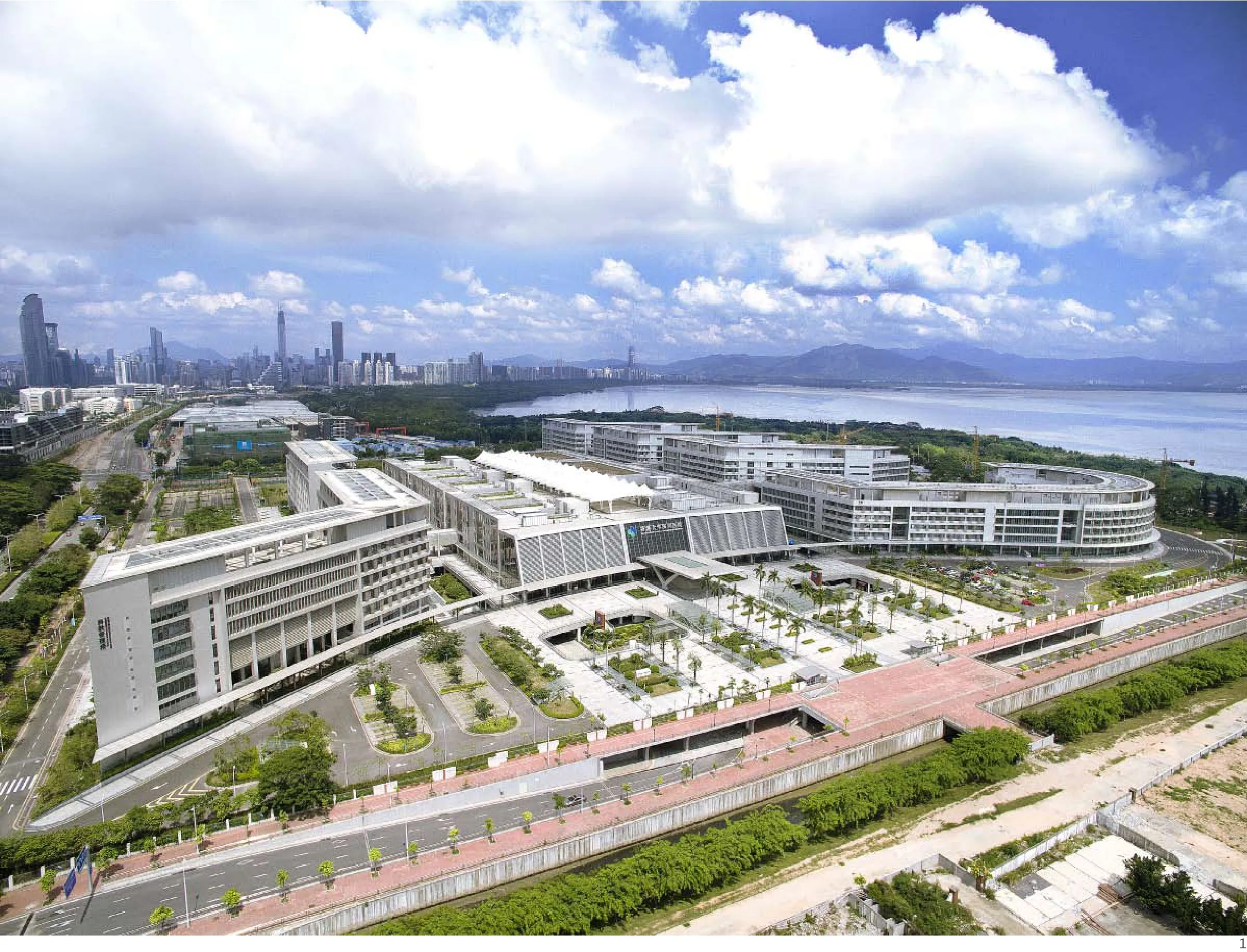
1 鸟瞰/Aerial view
深圳市政府于2007年举办了香港大学深圳医院的国际竞赛,该医院即是竞赛的中标方案。医院座落于深圳湾填海区16号地块,周边均为城市道路,南侧为红树林生态保护区和深圳湾海景,享有得天独厚的环境资源。
英国建筑师约翰·威克斯在医院建筑设计上倡导“机变论”,他指出:“功能变化很快,初始的功能要求本身,并不是医院固定不变的设计基础,设计者不应再以建筑与功能一时的最适度为目的,真正需要的是设计一个能适应医院功能变化的医院建筑。”
香港大学深圳医院即是“机变论”的现实作品。设计以一条宽约28m的医院街串联起门诊医技各个医疗单元,形成有机整体。医院街的东侧端部为开放尽端,可随医院的发展对各个部分进行扩建。由于医院街的控制,扩建后的建筑依然能够成为一个相互融合的有机整体,充满张力,契合场地。医院街不但是医院规划的控制主轴,而且是医院的交通主轴;它以弧形大厅为起点,贯穿医院整体,可方便到达每一科室。街内布置绿化、银行、花店、商店、咖啡厅、茶室、书店、环保电瓶车搭乘站,呈现出一幅动态的生活场景,打破了传统医院冷漠的室内景象。
为缓解医院规模过大所带来的不便,门诊部每一科室呈中心化布局,科室内设置诊室、基本的诊断设备及专科药房和收费处,简化流线,提高效率。
门诊、急诊急救、感染门诊、特需诊疗中心、体检中心、行政后勤、住院部均有独立的出入口;急诊急救与感染门诊位于地下一层,门诊、特需诊疗中心、体检中心位于一层,入院就诊患者在院区入口处经立体分流进入各自科室,妥善处理了医院众多流线交叉的问题。3座“L”形住院大楼与特需诊疗中心一起有节奏地布置在门诊医技楼南侧,行政信息楼与后勤服务楼位于门诊医技楼北侧,三者之间通过两条南北向的走道取得联系,结合东西向的医院主街构成院区的主要交通骨架,同时在主街两侧还衍生出多条就诊“巷道”,从而形成逻辑性极强、主次分明的鱼骨式交通网络体系。
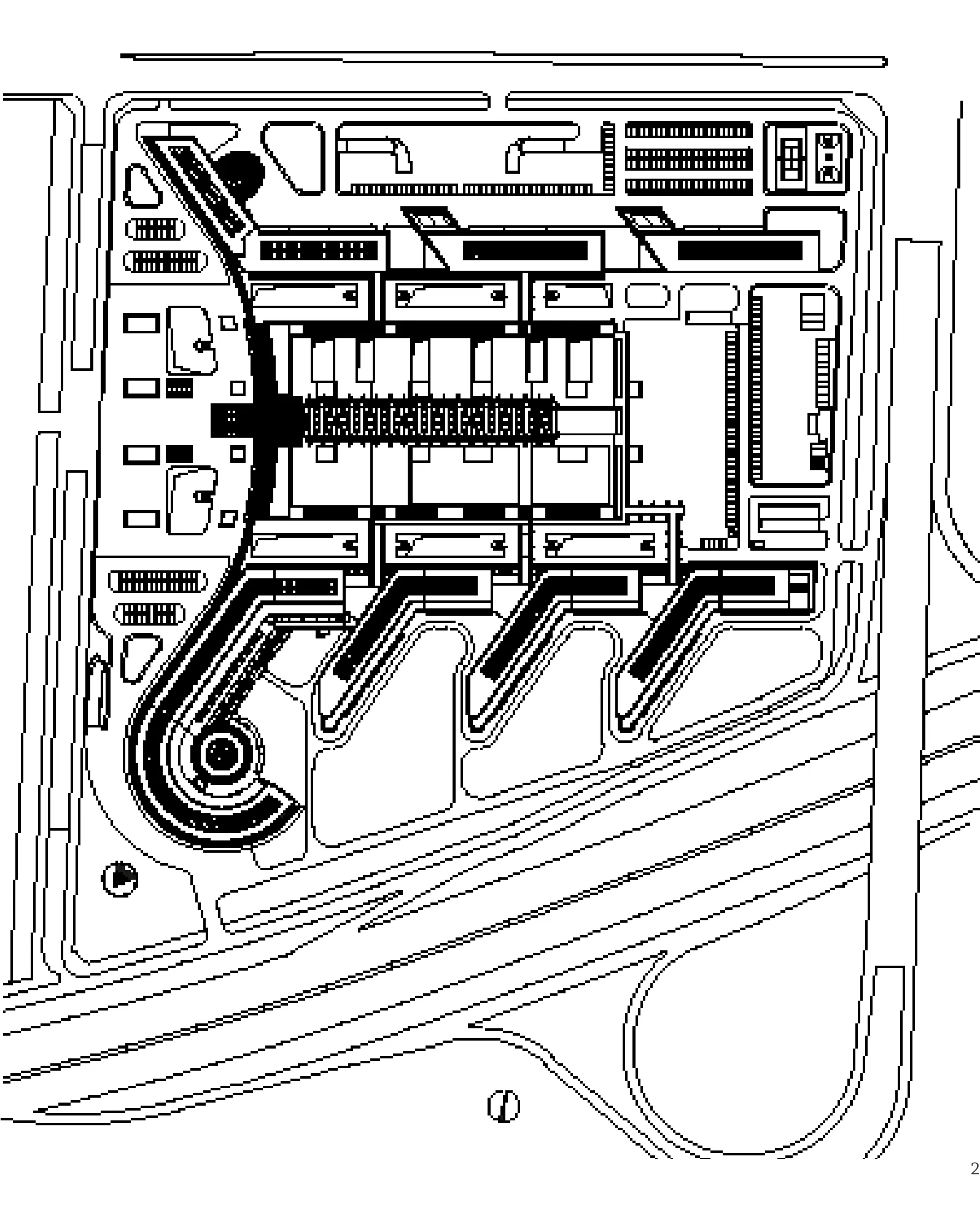
2 总平面/Site plan
项目信息/Credits and Data
设计团队/Design Team: 美国TRO建筑设计公司,孟建民,邢立华,侯军,甘雪森,王丽娟,吴莲花等/TRO(Boston), MENG Jianmin, XING Lihua, HOU Jun, GAN Xuesen, WANG Lijuan, WU Lianhua, et al.
用地面积/Site Area: 192,001m2
建筑面积/Floor Area: 352,478m2
设计时间/Design Time: 2007
摄影/Photos: 张超,厉跃胜/ZHANG Chao, LI Yuesheng
住院大楼朝向南侧或东南侧,楼前为开阔的绿化庭院,在视觉上与红树林原生态景区连为一体,并延展至深圳湾海面,为住院患者提供怡人舒心的观海视野,起到辅助治疗的作用;大楼地下一层为生活街市,布置普通营养餐厅、VIP营养餐厅及特需诊疗中心理疗部,北侧连续的下沉庭院为生活街市提供了充足的阳光、新鲜的空气和优美的景观。
医院主入口以大气舒展的弧形“凹”口空间与城市形成良好对话,建筑也以倾斜的弧线造型与入口空间契合,在加强建筑群统一性的同时结合具有动感的出挑雨棚构成独特的入口形象。
香港大学深圳医院是我国目前新医院的示范代表,每年院方不仅要接待国内各医院团队,还吸引了包括新加坡、以色列、法国、德国等外国医疗机构前来参观学习,成为了展示我国医疗建筑发展的窗口。
Te Shenzhen municipal government organized an international competition for the design of the University of Hong Kong - Shenzhen Hospital in 2007, and this design won the competition. The hospital is located in the 16th block of the Reclamation Area of Shenzhen Bay, with its periphery of urban roads. The south of the HKUShenzhen Hospital is a mangrove ecological protection zone and a view of the Shenzhen bay area, meaning that the building is endowed with unique environmental resources.
British architect John Weeks promotes the Teory of Indeterminacy in terms of hospital design,and has pointed out that the function of health care institutions is undergoing constant changes and alterations. Thus the demands of initial functions themselves cannot restrain the basis for hospital architecture design. Te architect cannot solely focus on the temporary coordination of architecture and its function. Instead, he remarks, "what an architect needs to do is to build architecture which suits the functional changes of the hospital".
The University of Hong Kong - Shenzhen Hospital is a realization of this concept. In this program, a 28m wide hospital street joins the different medical units and incorporates them all into an organic whole. The east edge of the hospital street is an open end which enables possible developments for future expansion. With the hospital street in a dominant position,the structures can remain an organic whole even after expansion. Te hospital street is not only the controlling main axis of the whole medical program,but also serves as the main traffic line. It begins with an arching lobby, traverses the whole hospital and reaches the destination of each department. Te green street is lined with banks, fower stores, shops,cafes, tea houses, bookstores, and environment friendly electromobile stations. The whole street is a dynamic and lively life scene which breaks the impersonal and indiferent indoor scenes.

To help ease the inconveniencies brought about by too large a scale, each department in the clinic is organized independently. There is the diagnosis room, fundamental equipment, specialty pharmacy,and the cashier office within each department so as to simplify the medical process and improve efciency.
There are independent entrances and exits to the outpatient clinic, the emergency and the firstaid, the infectious clinic, special clinical lab, medical checkup center, the administration and logistics,and the inpatient. The emergency and the first-aid room are on the underground B1 floor; the clinic, special clinical lab and the medical checkup are on the first floor. Patients who enter the hospital are divided at the entrance and arrive at different medical departments. In this way, the problem of many intersecting streamlines is solved. Three L-shaped inpatient wards and the special clinical lab are placed rhythmically to the south of clinic and technical department building. The administration and information building and the logistics building are situated to the north of clinic and technical department building. Two paths, running in a southnorth direction, connect the three buildings, which,combined with the main hospital street running in an east to west direction, composes the main traffic structure of the hospital area. Meanwhile,many alleys are attached to the main street, which produces a logically connected fishbone traffic network.
The inpatient building faces south or east south, and before it, there lies a green courtyard. Together with the Mangrove Nature Reserve, the green courtyard produces a visual wholeness which further extends to the sea of Shenzhen Bay. Such a fantastic visual feast provided for patients facilitates therapeutic efect. Te underground foor has general blocks, nutrition restaurants for commoners and for VIPs, and the department of physical therapy affiliated to the special clinical lab. The continually descending courtyard supplies the blocks with sufcient light, fresh air and beautiful scenery.
The main entrance of the hospital forms a large and smooth arch which coexists in harmony with the city. The arching architecture of the hospital agrees with the main entrance in style,which produces an artistic whole and makes for a unique entrance image together with the dynamic protruding awning.
The University of Hong Kong - Shenzhen Hospital is one of representative hospitals in China. Te hospital not only receives new hospital visiting teams every year, but also attracts foreign medical institutions from Singapore, Israel, France, and Germany, whose medical personnel often visit and study at the hospital. Therefore, it has become a showcase for the development of Chinese medical buildings.
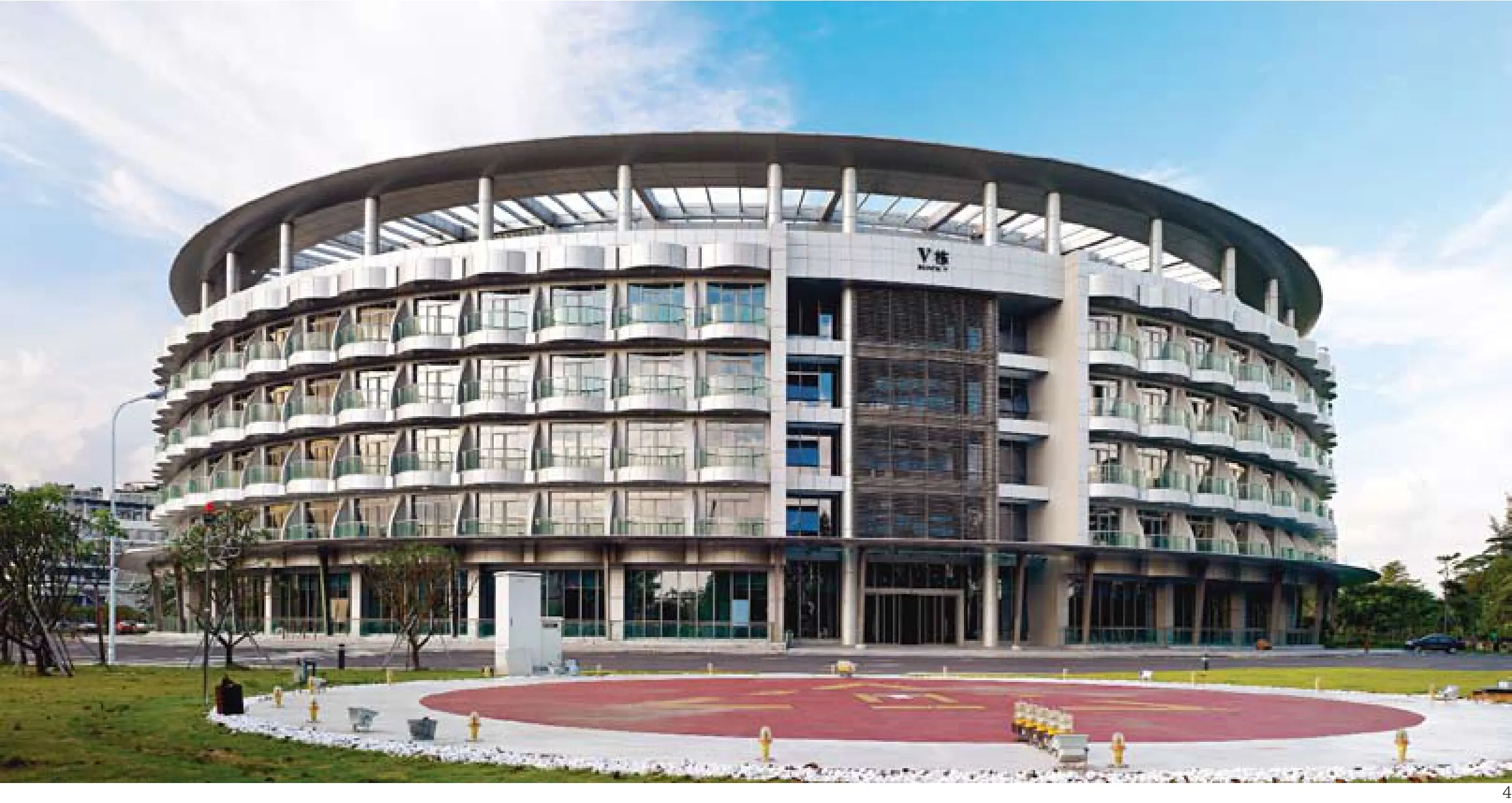
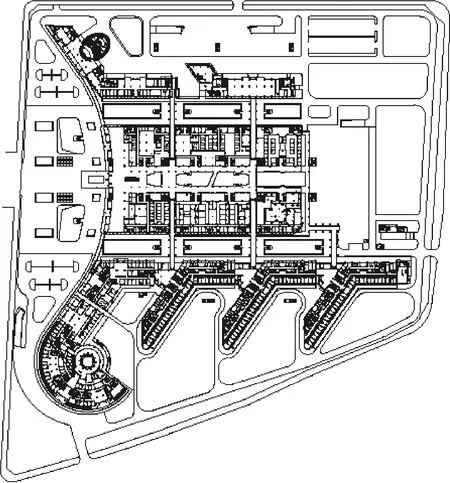
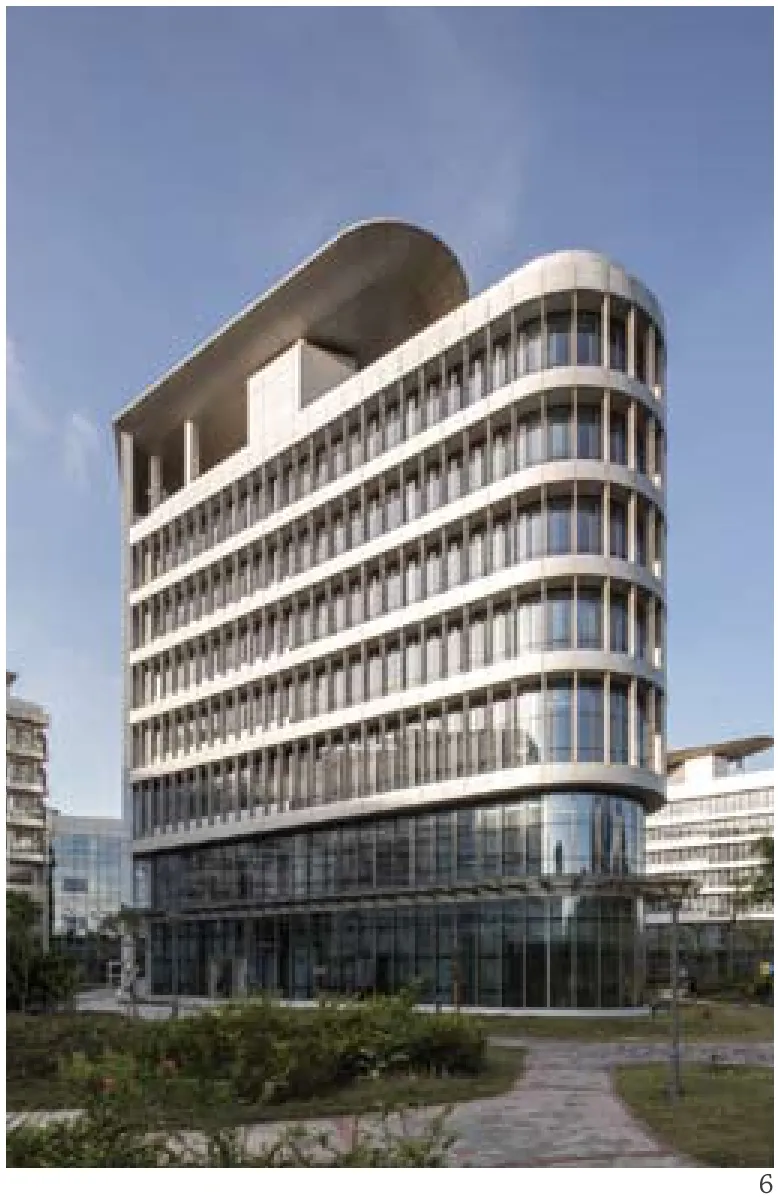
3 国际医疗中心/International Medical Center
4 国际医疗中心/International Medical Center
5 首层平面/Floor 1 plan
6 住院部/Inpatient Building
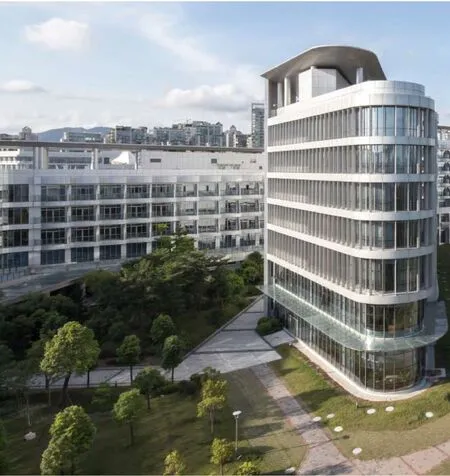
7 住院部/Inpatient Building
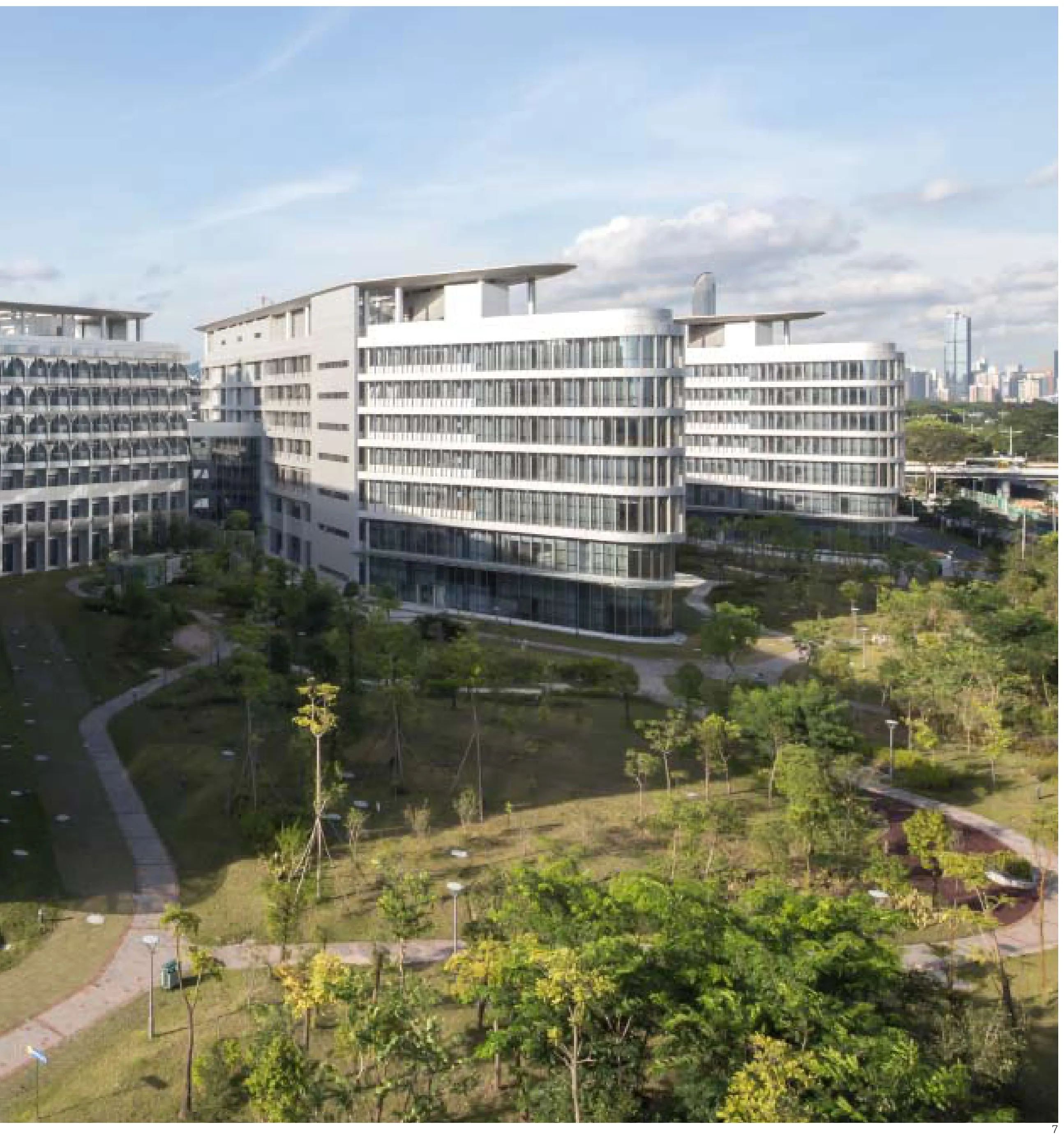
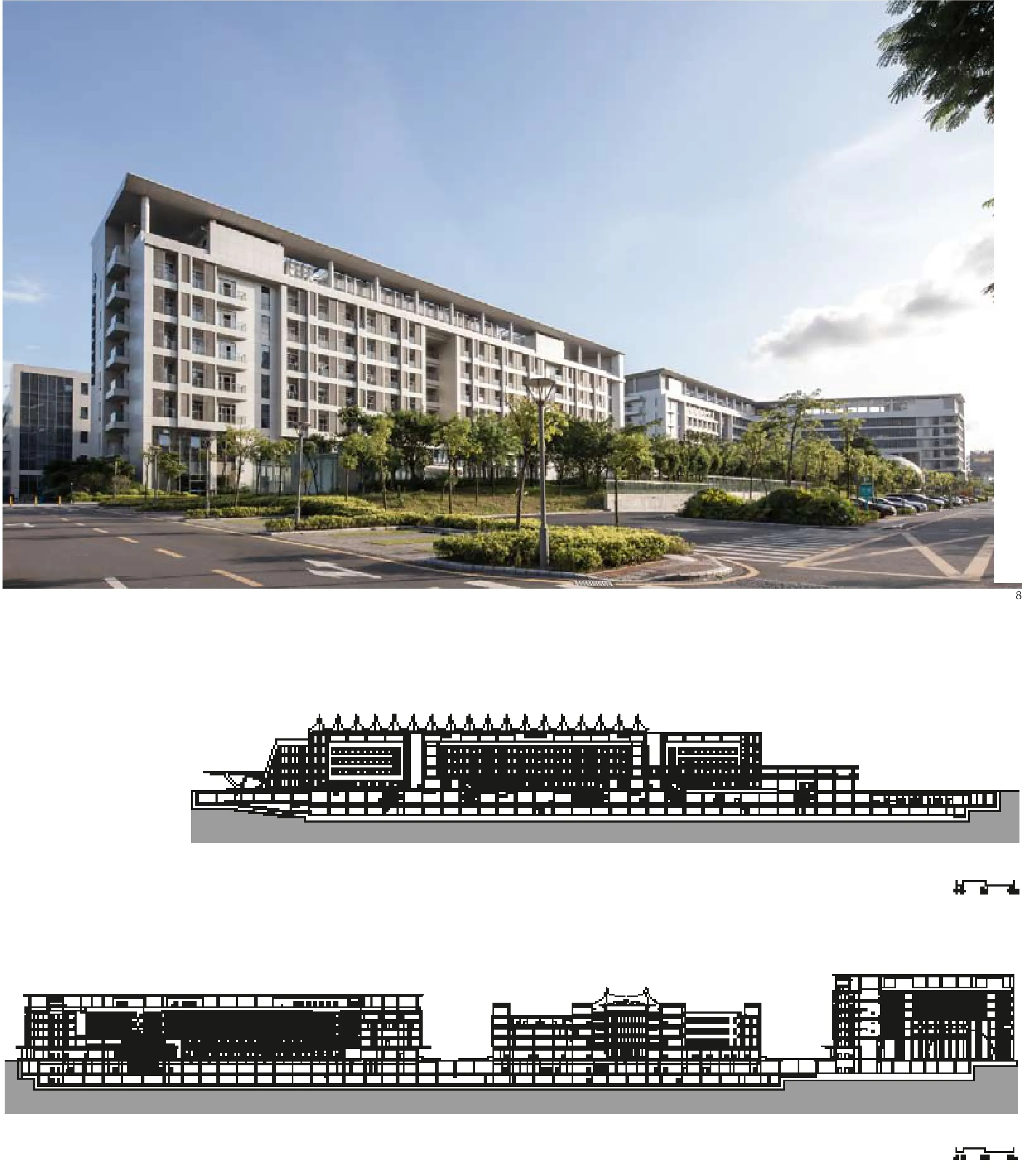
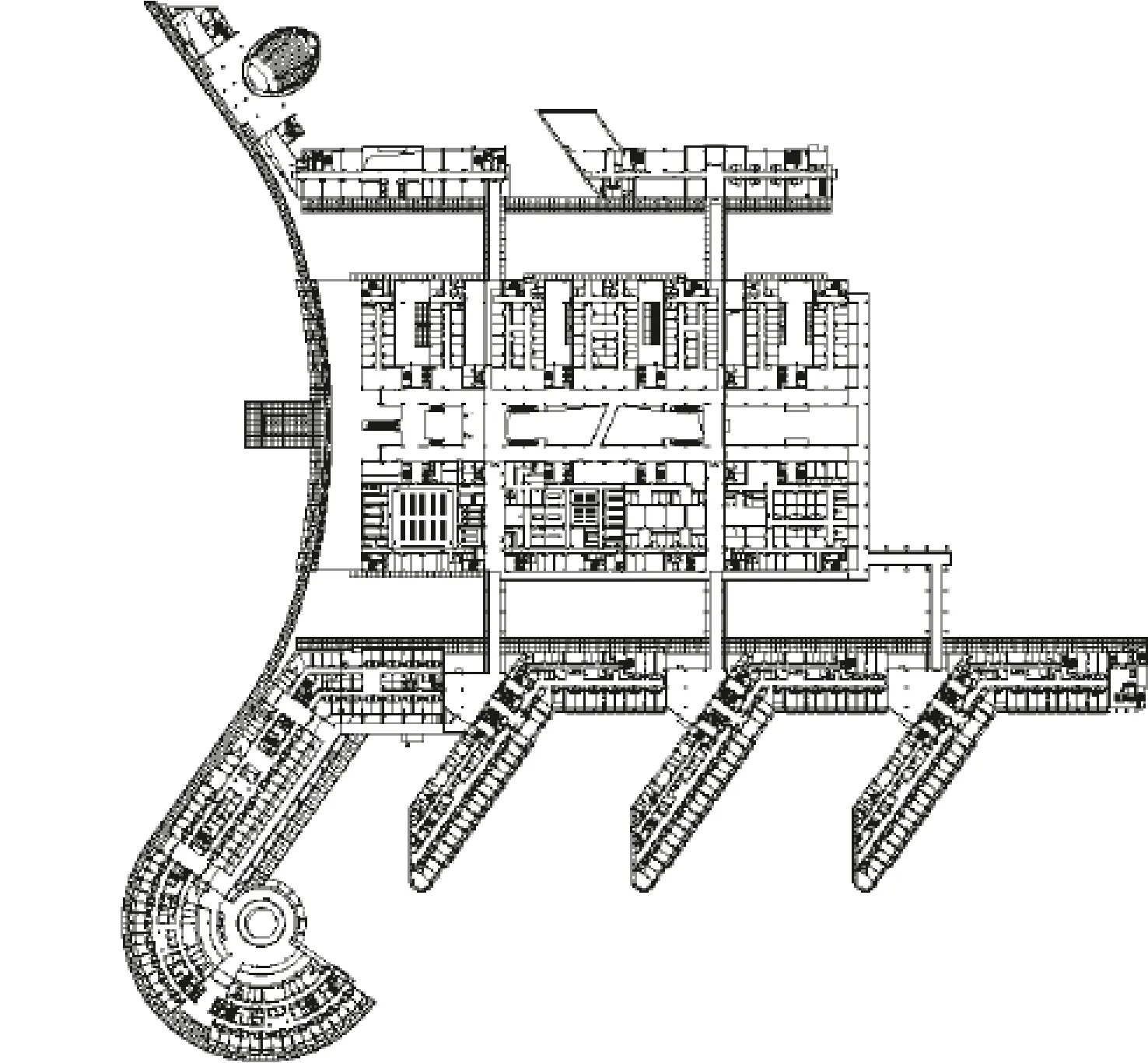
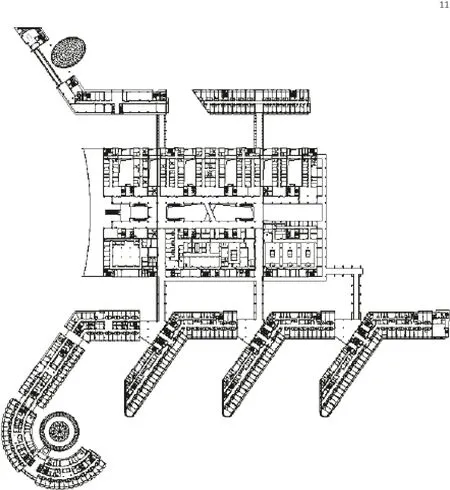
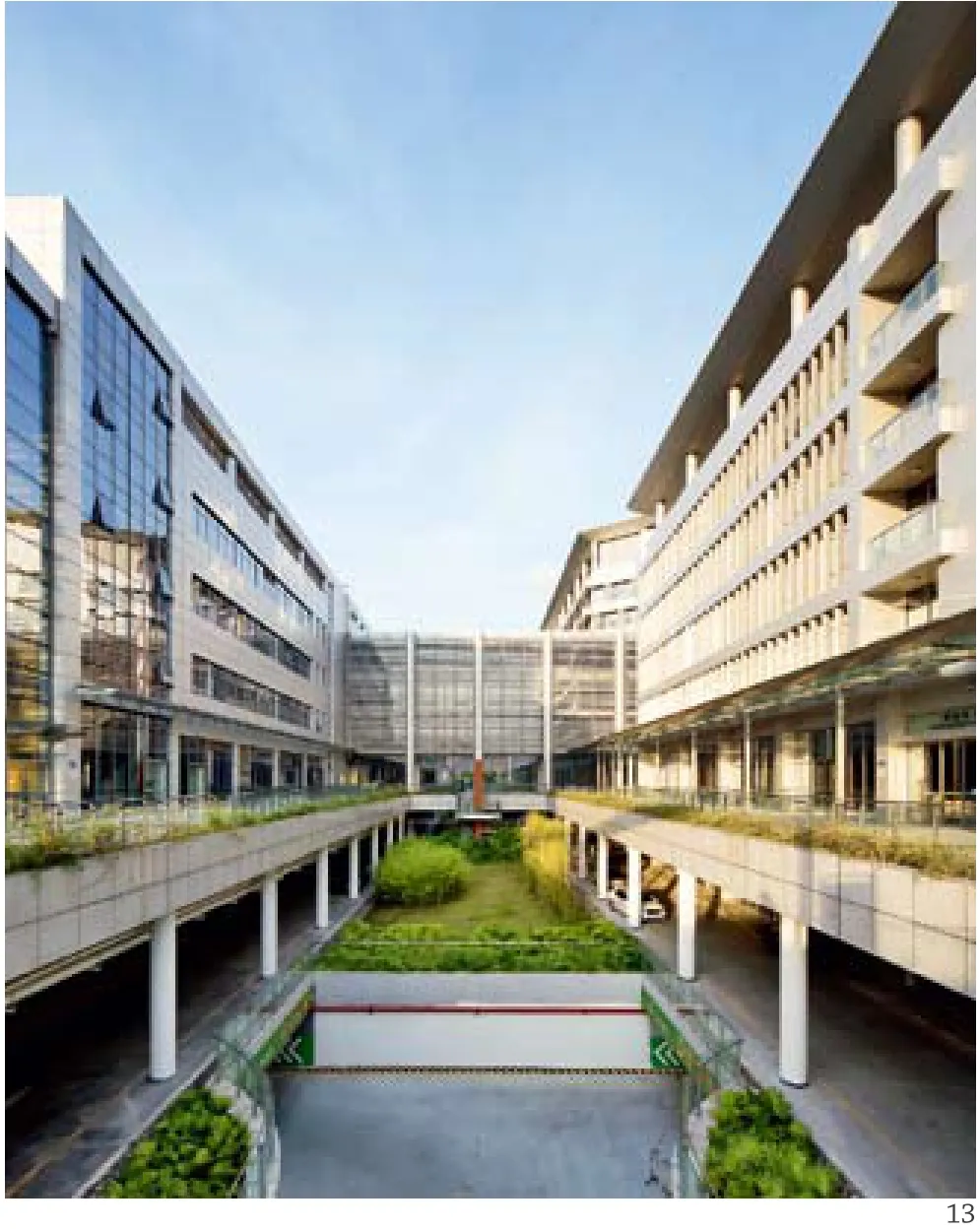
8 行政楼/Administration Building 9.10 剖面/Sections
11 二层平面/Floor 2 plan
12 三层平面/Floor 3 plan
13 下沉庭院/Sunken courtyard
评论
谷建:建设在深圳这个年轻而具有雄心和抱负的大都市里的大项目从来不缺乏关注,香港大学深圳医院亦是如此,自设计之初到建成,始终是医院建筑设计界关注的焦点。关注的“焦点”,多在于其之“大”、其之“新”以及港大冠名后带来的管理服务的模式,还有“主刀”的孟建民,因而5年的建设周期,也是吊足了同行的胃口。项目建成后,吸引了众多的参观者;犹如深圳特区建立之初引领内地观念更新一样,后续建设者和管理者们或感性或理性地从中得到了滋补,也收获了颇多好评。
作为同道,深知对于规模大至香港大学深圳医院的项目,设计是具有相当难度的。难度在于对诸多复杂功能集成后的“逻辑”把握,以及对于整体建筑的控制力。医院建筑设计似乎是在无数条“逻辑”关系中进行梳理、抽丝剥茧般的权重判断和取舍的过程,包括医疗空间的逻辑、功能的逻辑、交通组织体系的逻辑、城市设计的逻辑、地域性表达、个案独特性及用户体验等等,在诸多“逻辑”中抽身,又能提纲挈领、化繁为“简”、使庞大的建筑清晰“可读”,达致所谓“大道至简”的状态,是一种功力。“简约而不简单”则是境界,清晰简单的逻辑下丰富的空间、尺度、色彩和材质的变化,无疑定义了功能空间特定的场所精神,丰富了用户体验,并强化了功能空间的逻辑;良好的城市界面则形成与城市的和谐对话关系。
项目之“新”,新在功能设计的内涵,诊疗中心布局模式在满足了高效率的基础上提供了灵活性;国内医院首创的立体交通无风雨接驳系统设计,体现出对城市的态度和独特的人文关怀,结合地域性气候特点而形成的生态型微循环系统和地下生态式停车场,自然风、阳光、绿色的引入、全方位的人文关怀,使香港大学深圳医院成为一座有“温度”的医院。
好的医院设计,应该既是极简又是极丰富的;既是极度理性又是极度感性的,我们在这个项目中读到了这些。
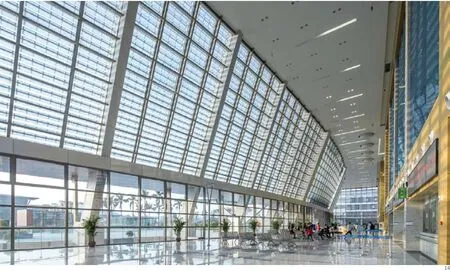
14 入口大堂/Entrance lobby
Comments
GU Jian: Construction projects in Shenzhen, a young but ambitious city, never lack attention. So does The University of Hong Kong - Shenzhen Hospital. It has always been the focus of concern in the field of hospital architecture design from start to completion. Most attention has been attracted to its large scale and innovation, as well as its service management when entitled by the University of Hong Kong. Its main designer MENG Jianmin, and 5-year construction period have also whetted the appetite of other peers. Upon the completion of this project, numerous visitors came here. Just like how the establishment of the Shenzhen Special Economic Zone led concept update in mainland, the University of Hong Kong - Shenzhen Hospital not only provided a lot of experience both rationally and emotionally to subsequent builders and managers but also gained a lot of praises.
As a fellow architect, I am fully aware of the difficulty when designing such a large-scale project like The University of Hong Kong - Shenzhen Hospital. Difficulty lies in the logic integration of many complicated functions as well as the overall control of this building. It seems like that hospital architecture design is a process of articulation and meticulous weight judgment or choices in countless logic relationships, including the logic of medical space, function, traffic organization system, urban design, regional expression, case characteristics, user experience and so on. The architect has to be highly capable to distill the essence and make his work clearly readable. Te principle of "minimal but not simple" is not easy to achieve. Although the logic is simple and clear, the space, scale, color and texture are full of change. Te design undoubtedly defned a unique place spirit, enriched the user experience, and strengthened the logic of functional space. In addition, the urban interface of this building formed harmonious relationship with the city.
"Innovation" of this project mainly lies in the implication of function design. The layout of clinic center is highly efficient but also flexible. The threedimensional transportation system, which kept users from bad weather, is first adopted in domestic hospital to reflect exceptional humanistic care. The ecological microcirculation system and underground parking lot which adapts to the regional climate, as well as the introduction of natural wind, sunshine and green, makes the University of Hong Kong - Shenzhen Hospital a warm hospital.
A good hospital design should be simplistic but also very rich. It should be highly rational but also deeply emotional. We have seen all these qualities from this project. (Translated by ZHANG Xian)
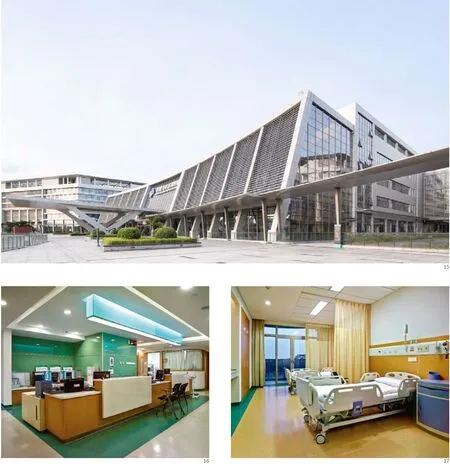
15 主入口/Main Entrance
16 内景/Interior view
17 病房内景/Interior view of ward
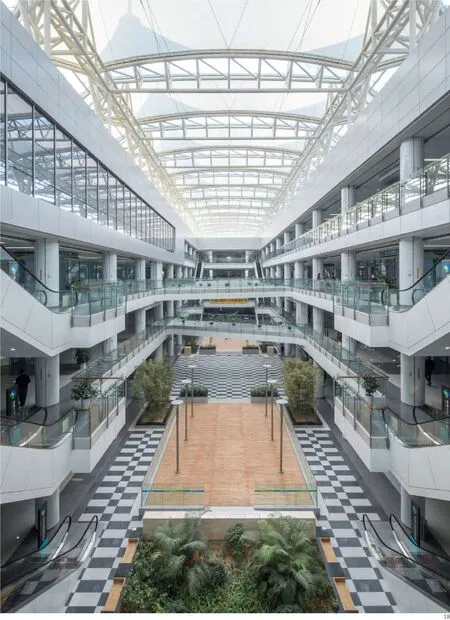
18 医院街/Te Promenade
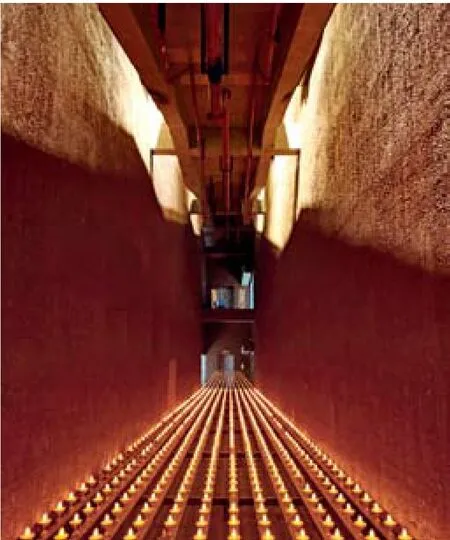
人文精神
公共文化建筑的研究与实践
Humanistic Spirit
Research and Practice of Public and Cultural Architecture
Te University of Hong Kong - Shenzhen Hospital, Guangdong, China, 2012
